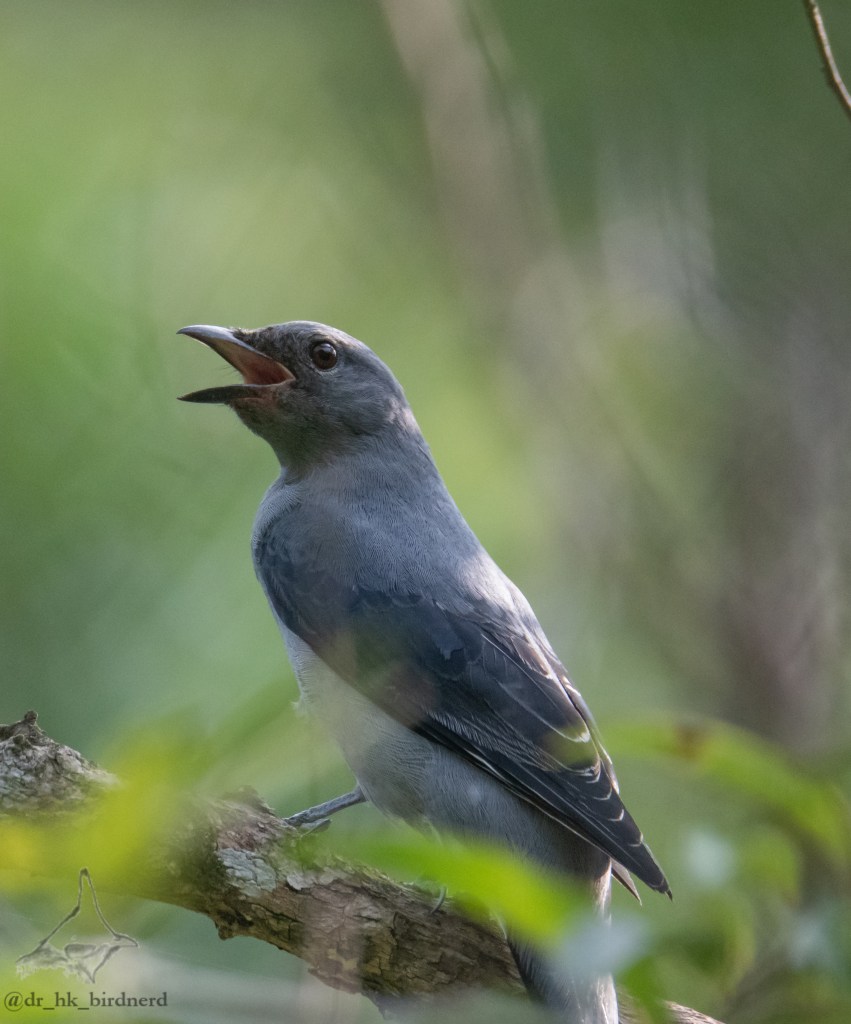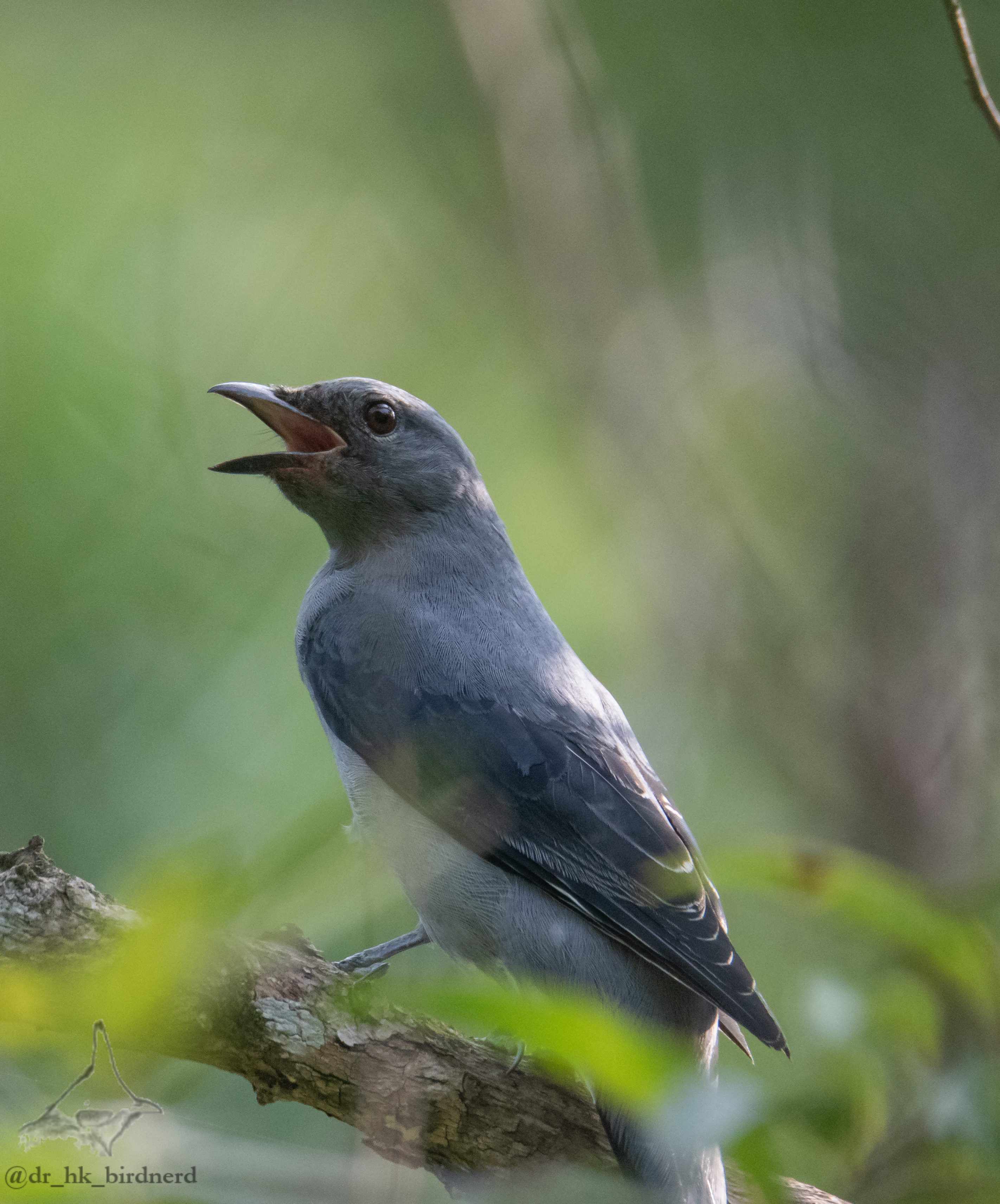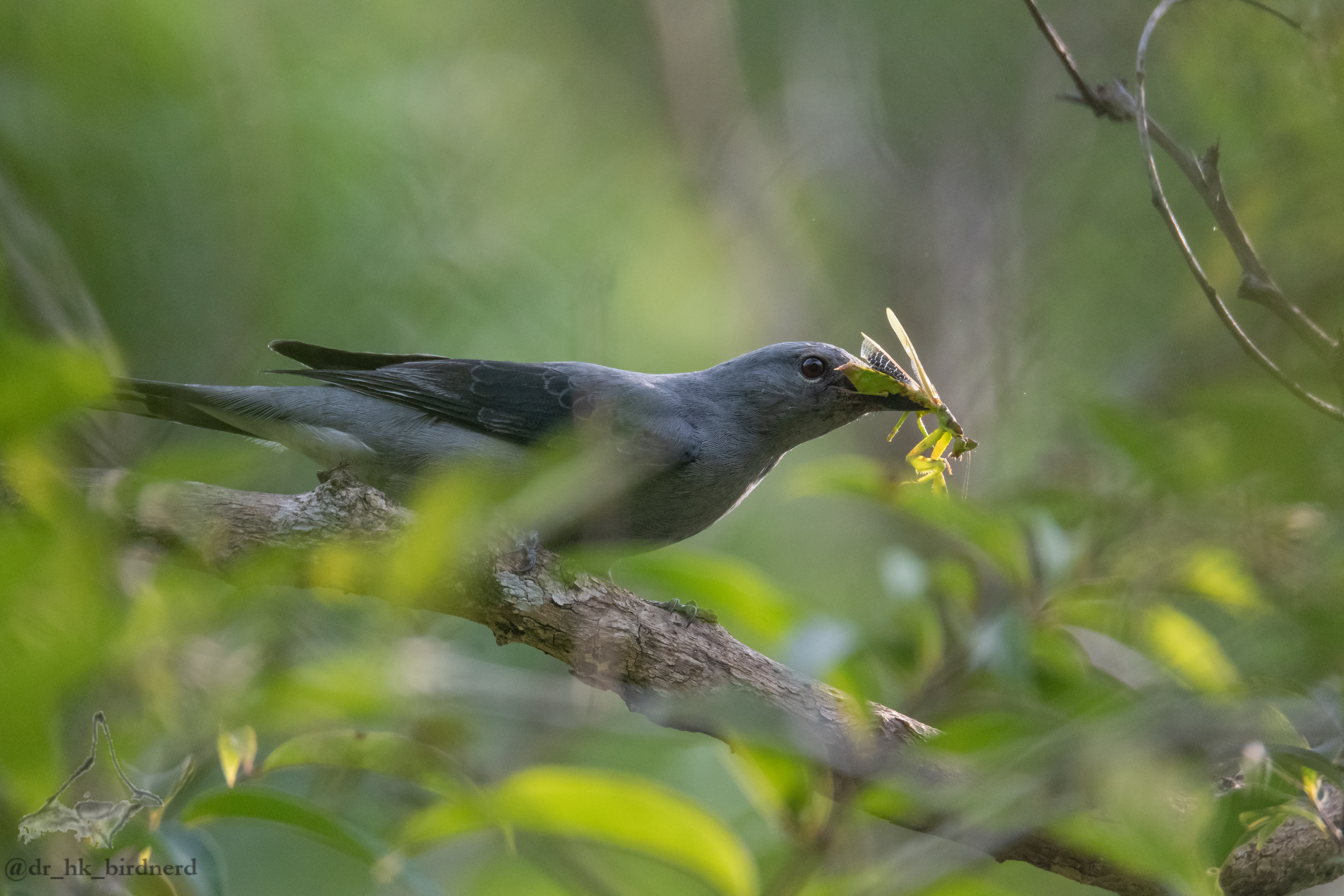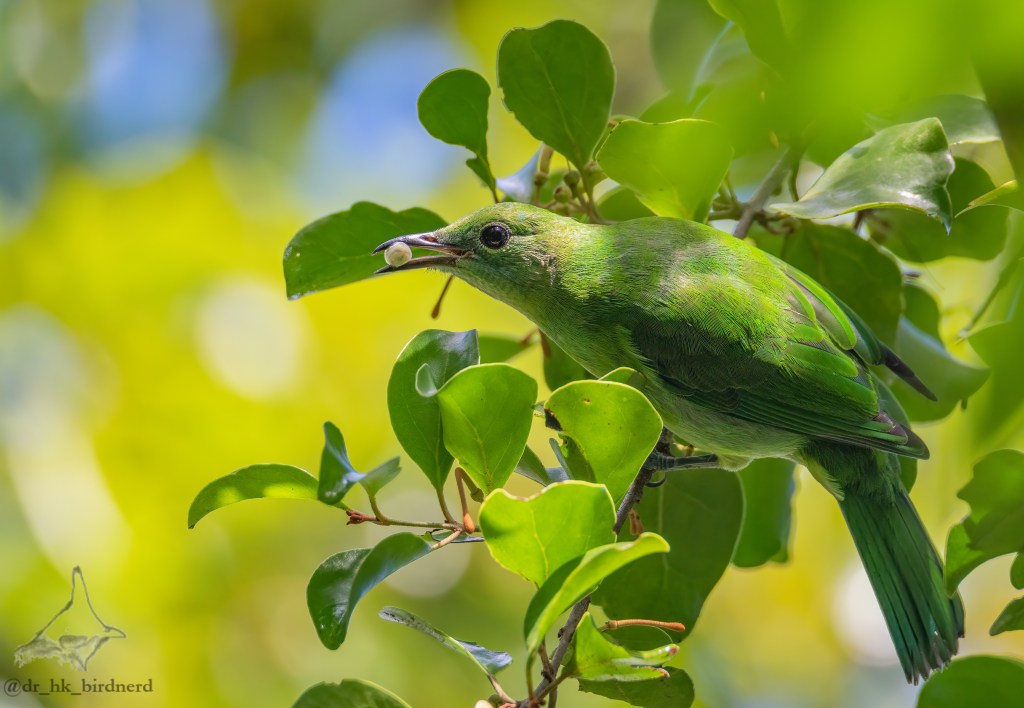
Well, considering today’s trip as well as reports from yesterday, it seems that the paradise flycatchers I got so used to seeing this month have left. Indeed their absence was very much felt on the trail this morning, which boasted a handful of resident species, as well as some migrants. The autumn migration should replenish shortly, though, with a new round of flycatchers passing through the territory from around now through October and November, as well as buntings. Regular winter visitors should also begin to arrive soon as well.
The most photogenic of them all, however, was a lovely female orange-bellied leafbird, perhaps the same from the other day. It was singing with a very high-pitched whistle for a short while, confusing us at first.

Another slightly less common resident was a grey-chinned minivet couple—one male, one female. I’ve often struggled to get decent shots of these birds in spite of how common they are in Hong Kong’s mature secondary forests.
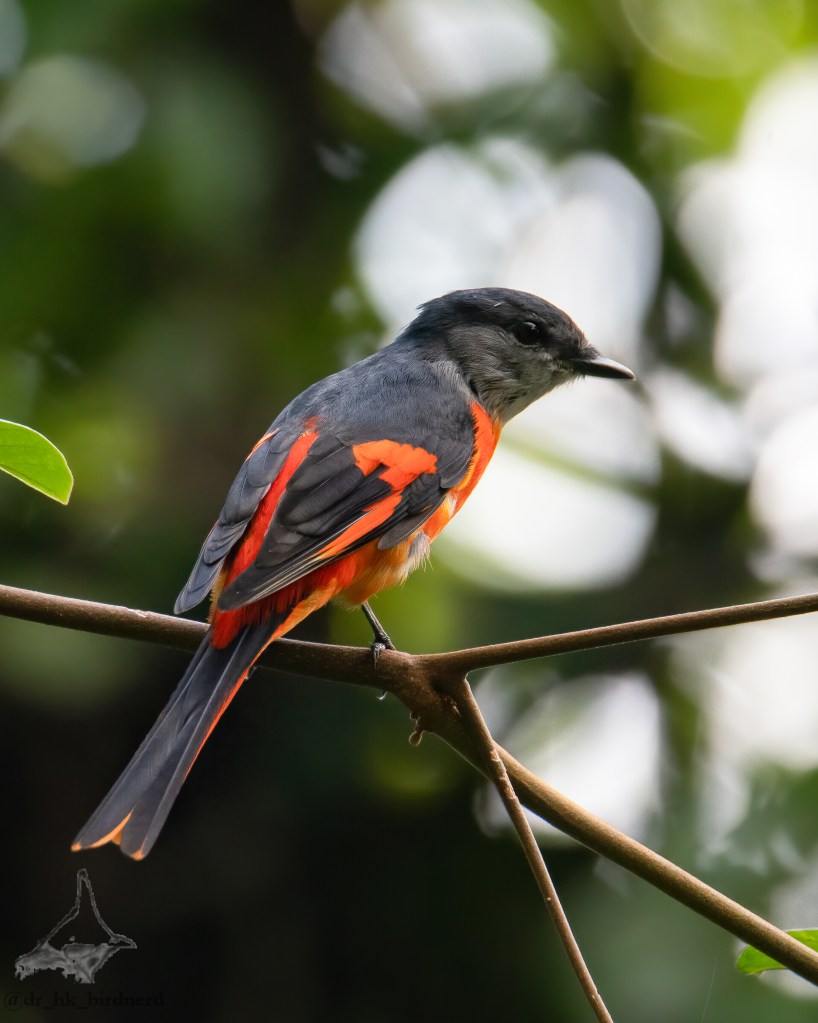
In the past, the females have been more cooperative subjects than the males, but today I was fortunate to get a very handsome and confident male bird showing off for a few seconds, while the female, wisely perhaps, kept her distance.

We also recorded the call of a bay woodpecker, perhaps two, as well as a single but very distant dark-sided flycatcher, and a single female yellow-rumped flycatcher. The usual crowd of chestnut bulbuls, white-bellied erpornis, common tailorbirds, fork-tailed sunbirds, and Japanese tits also kept us company on our walk.





